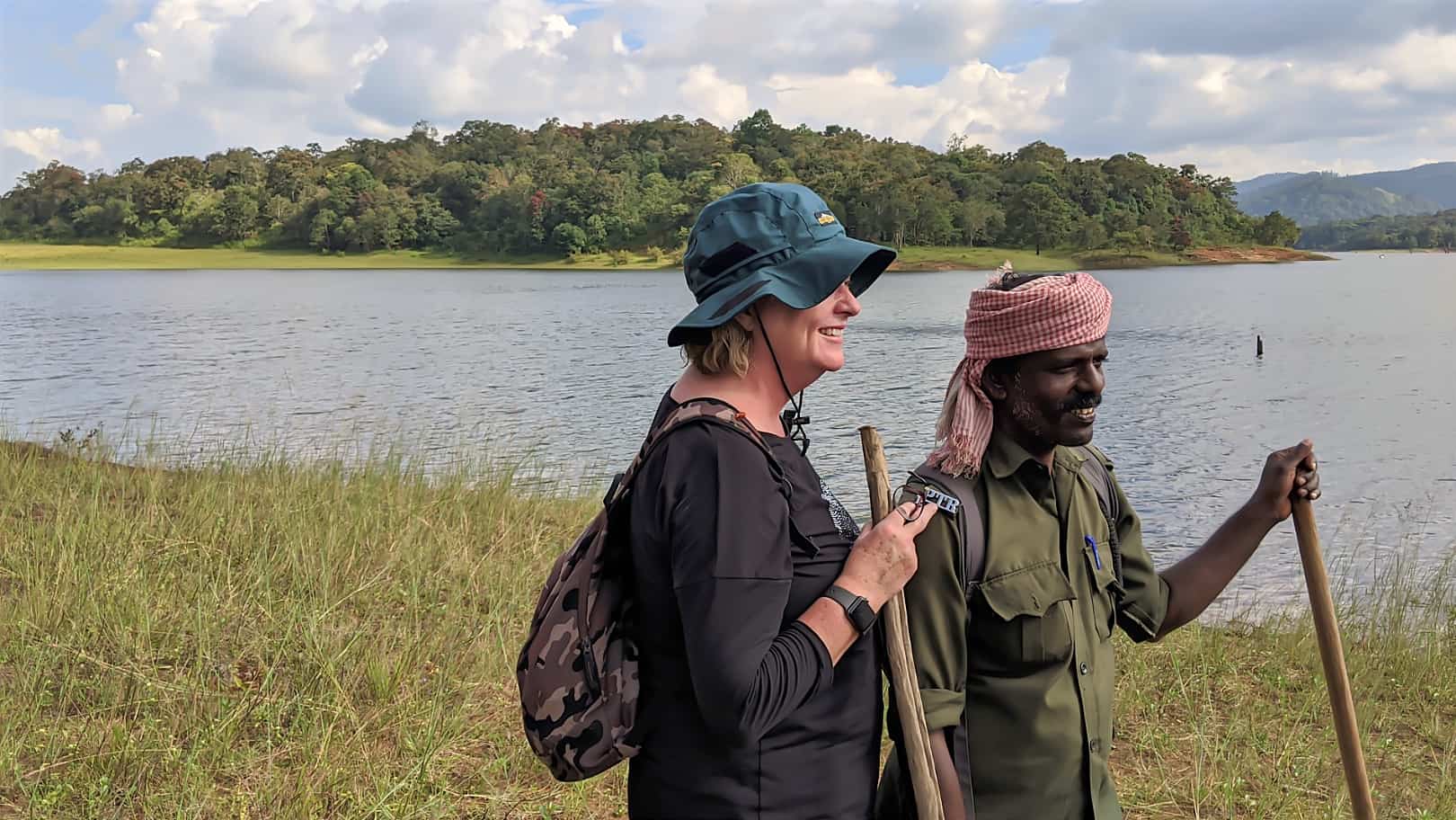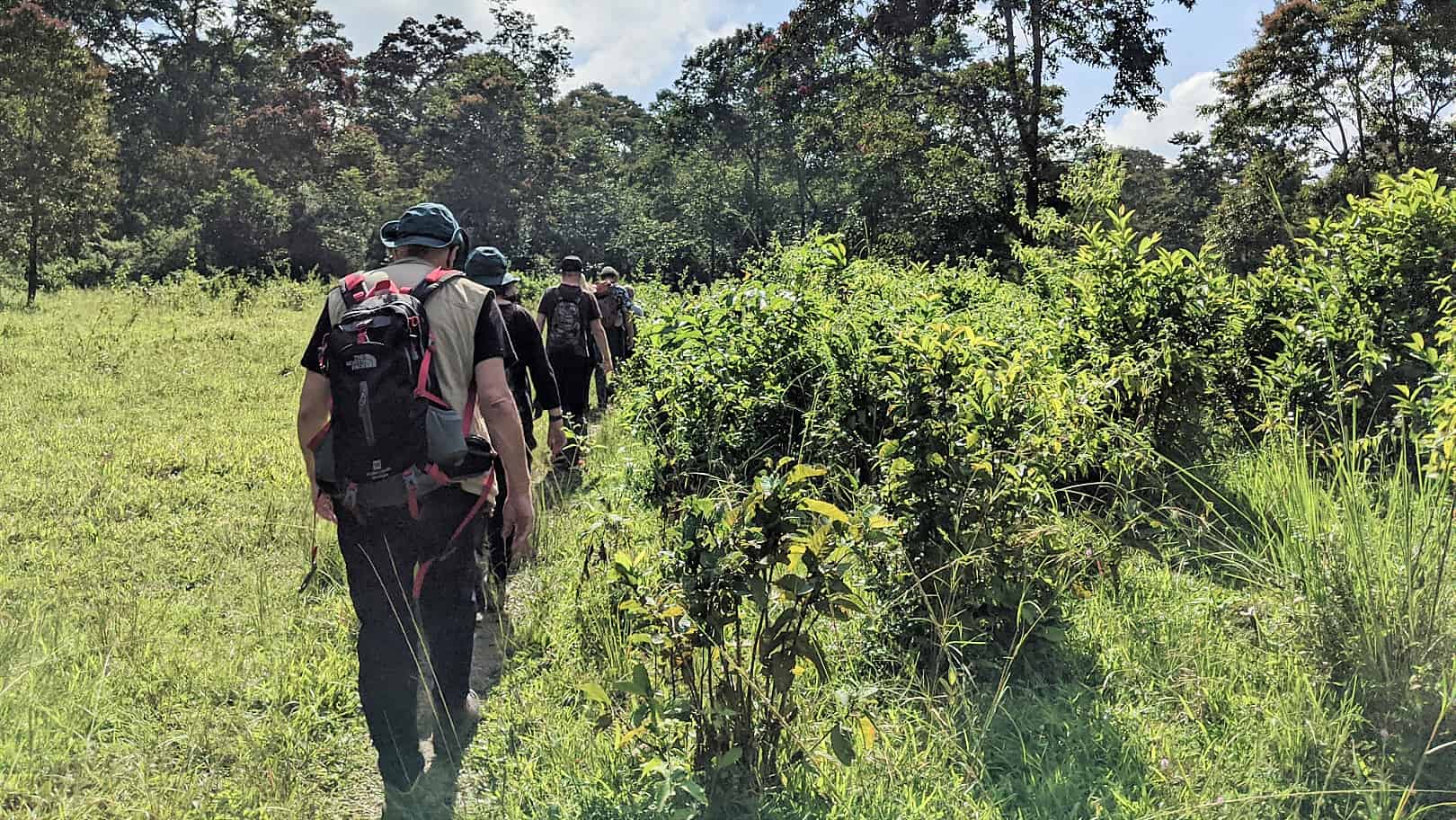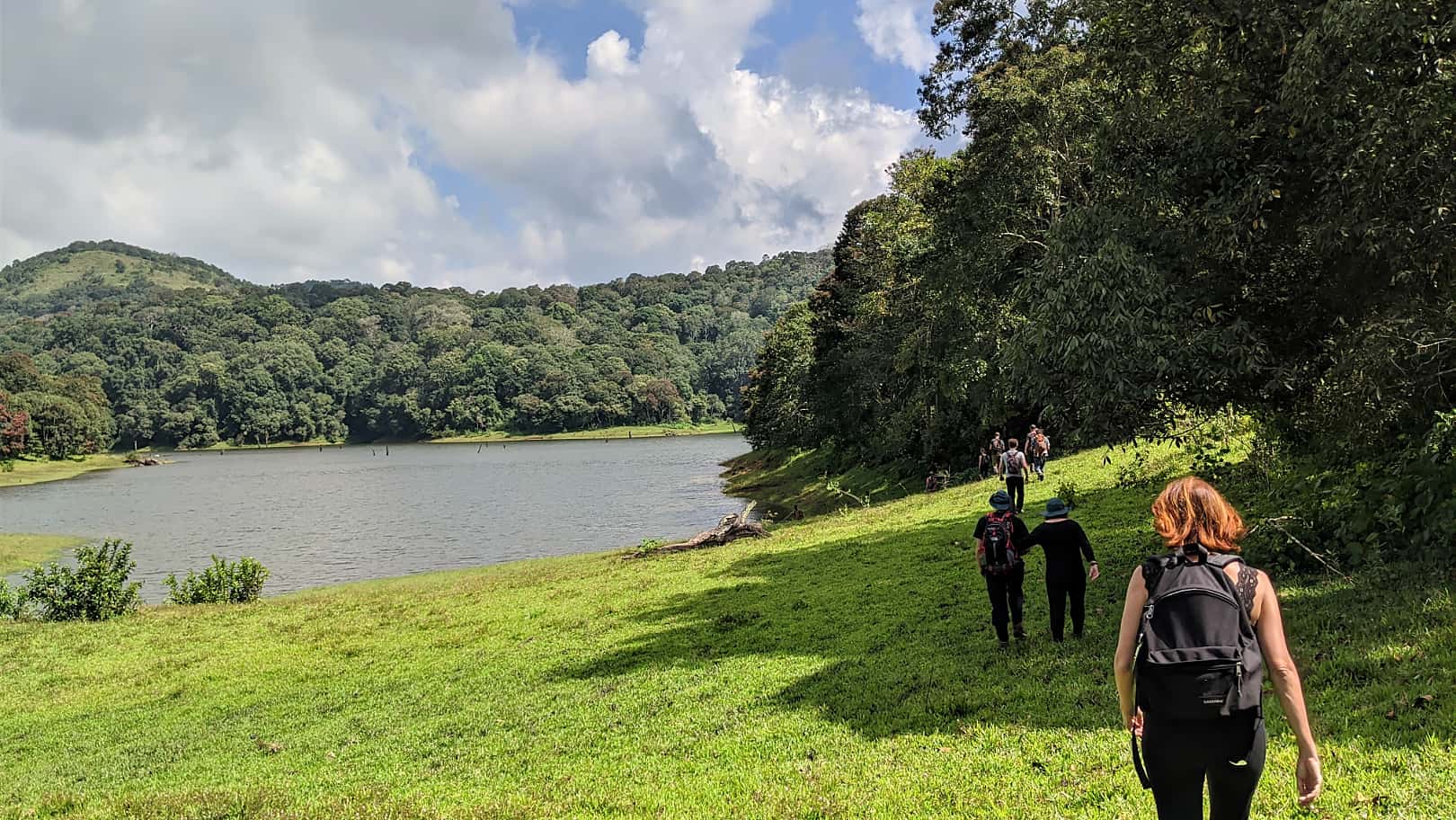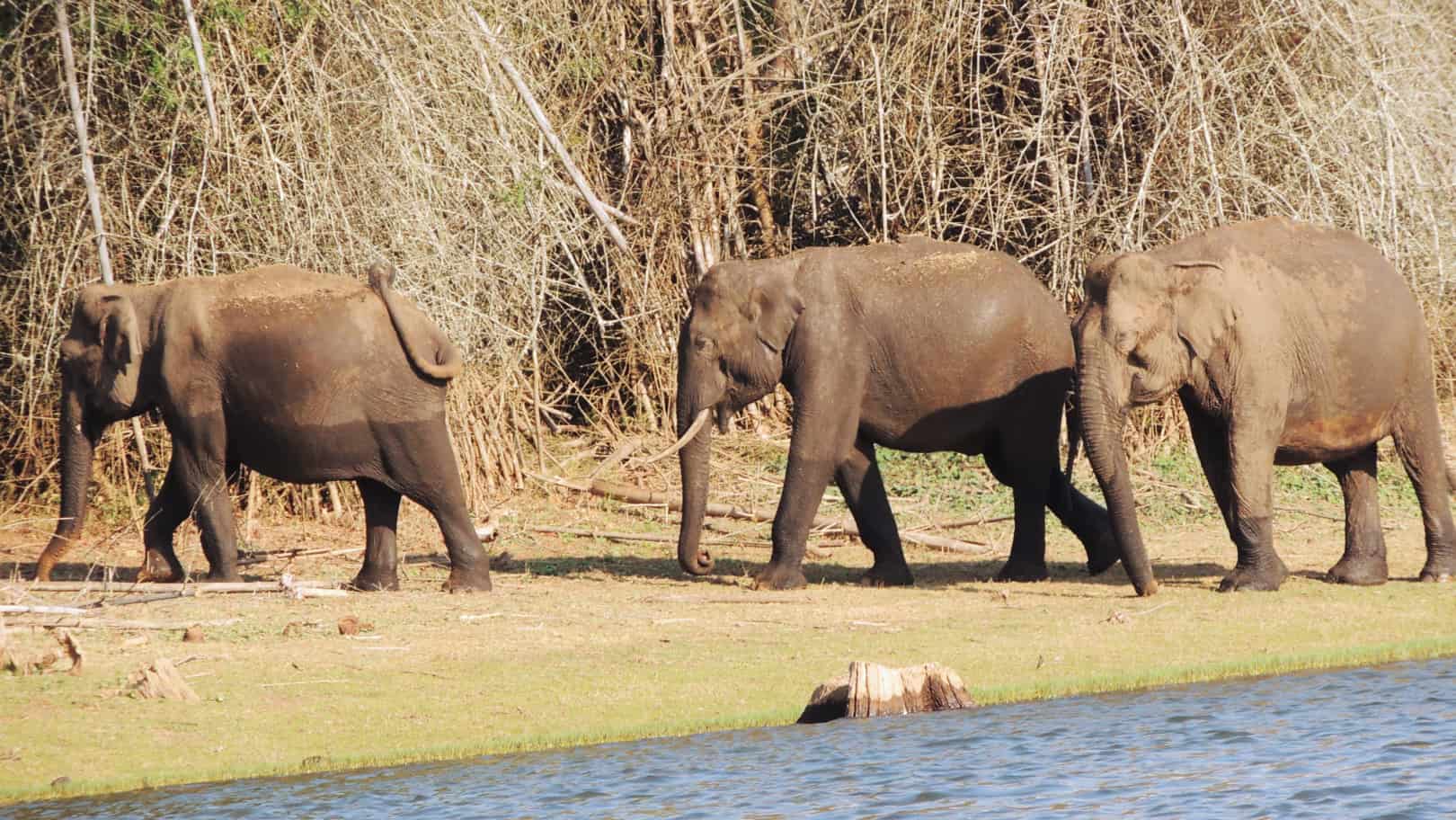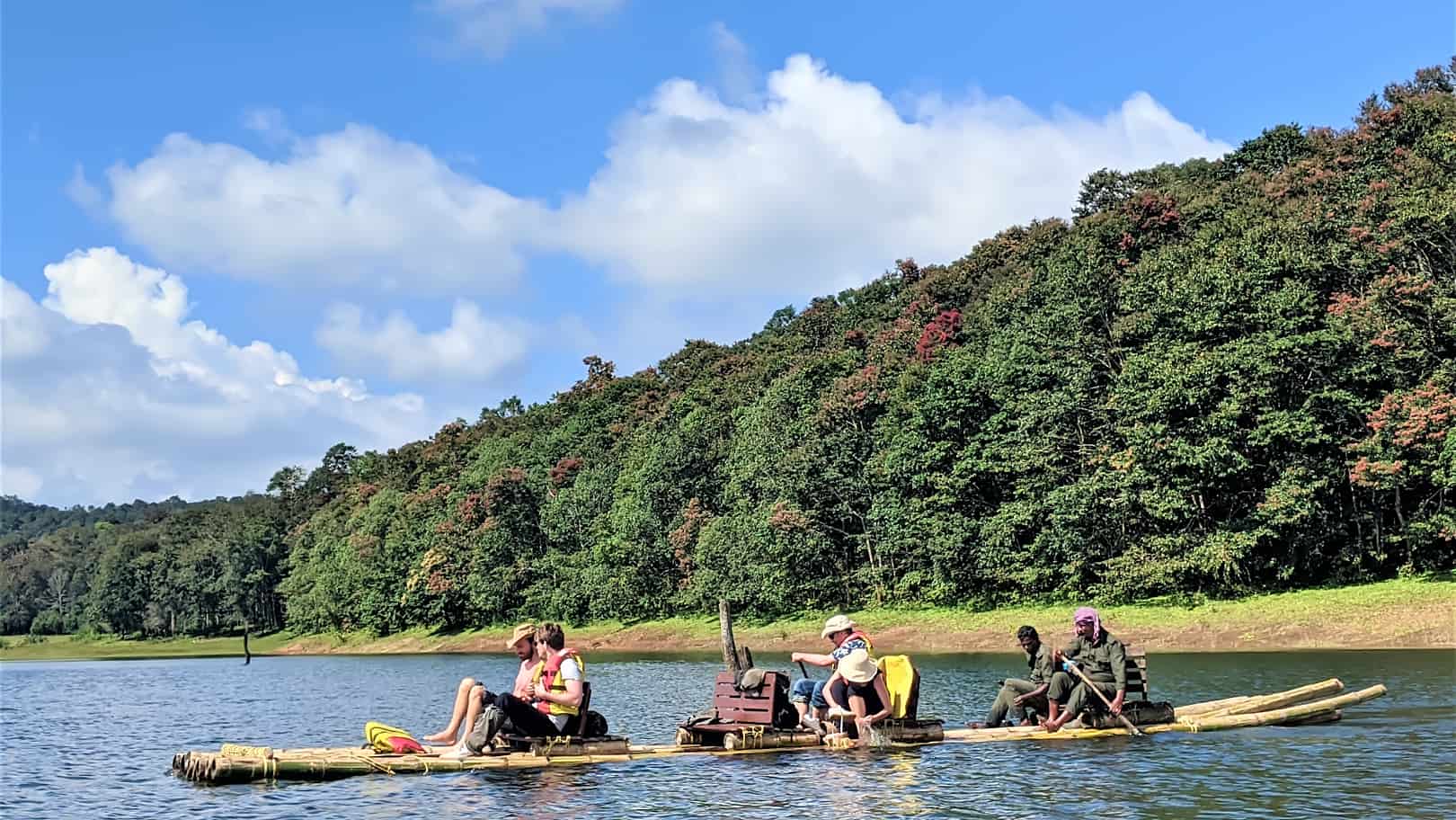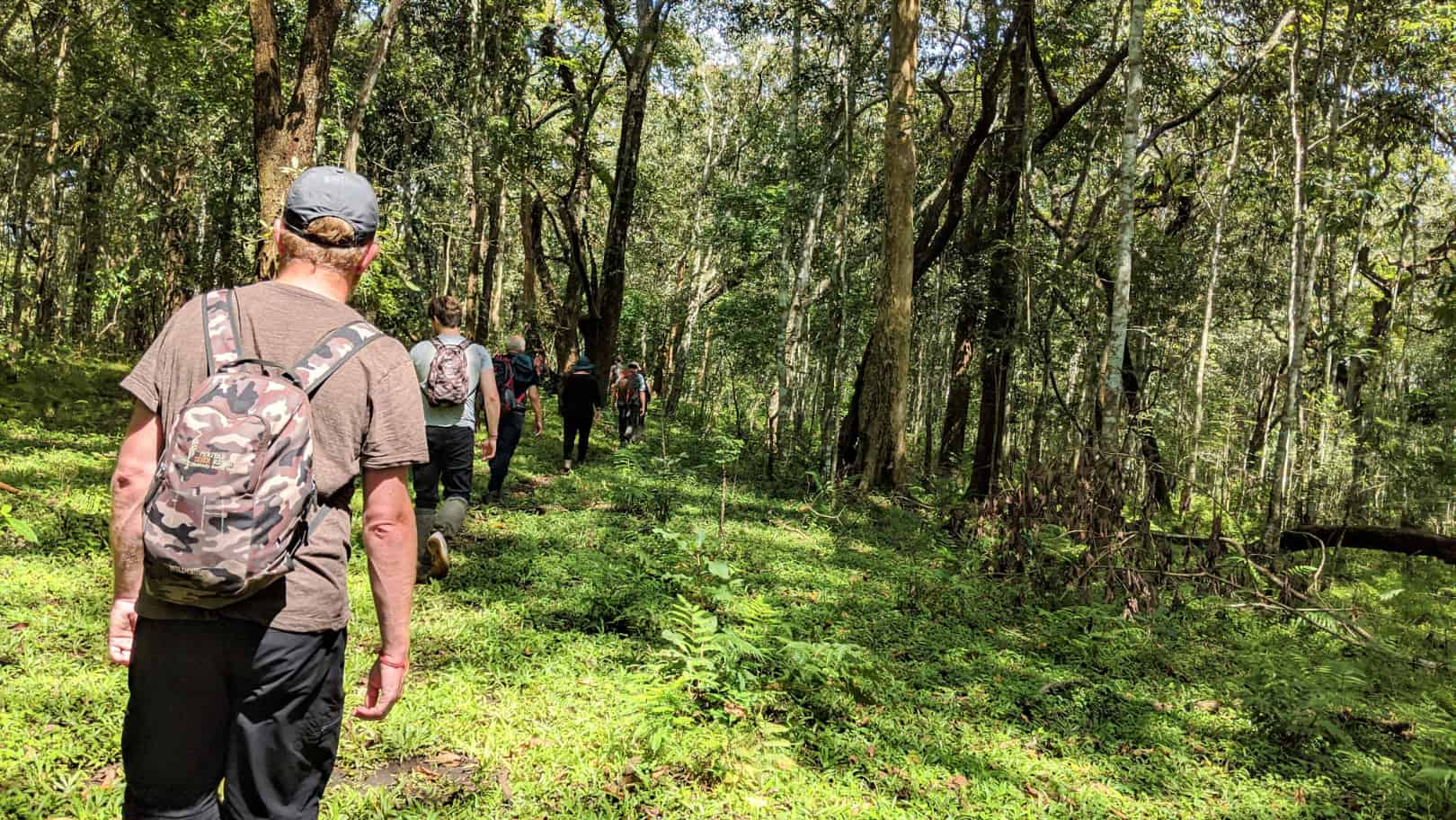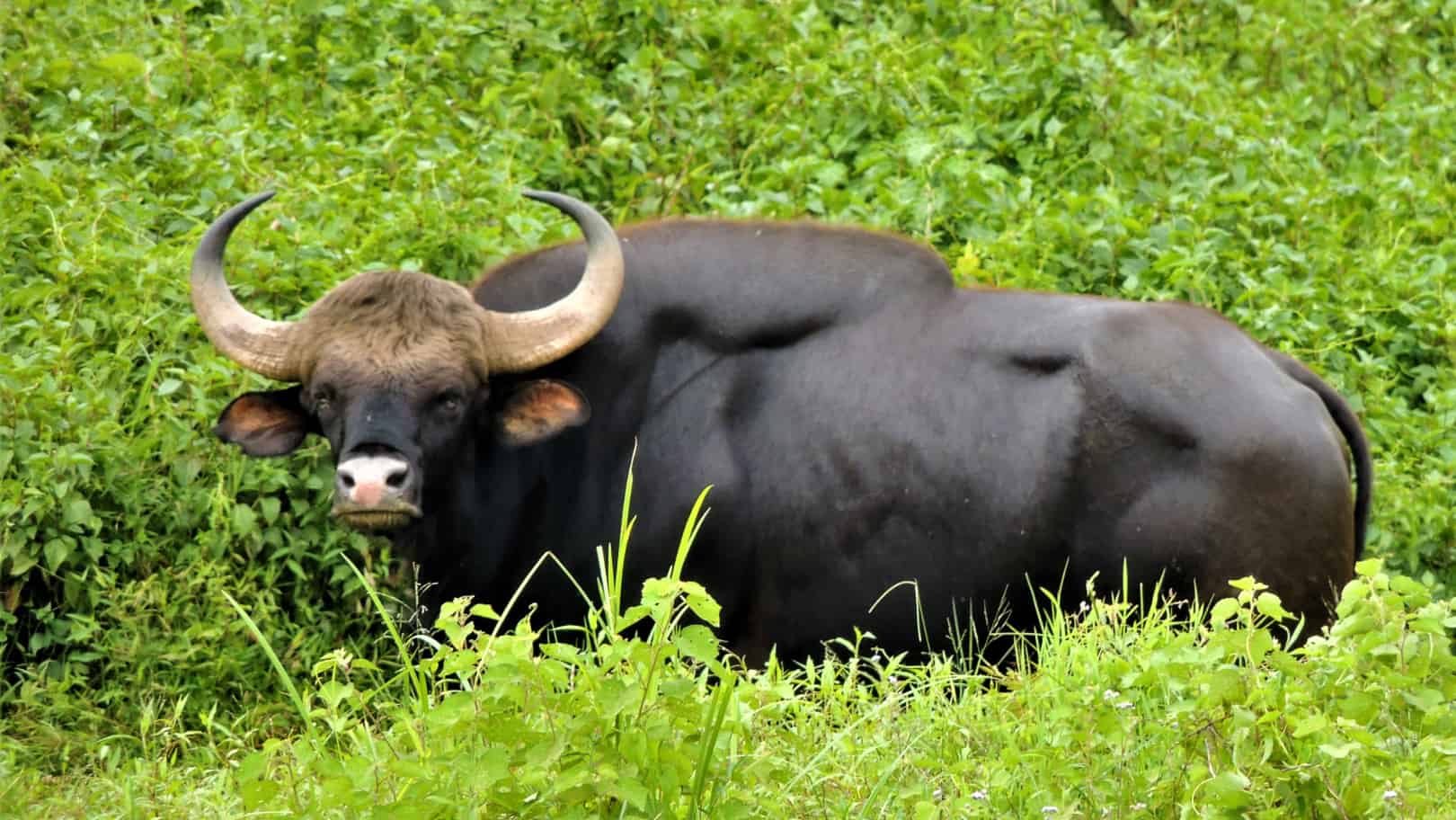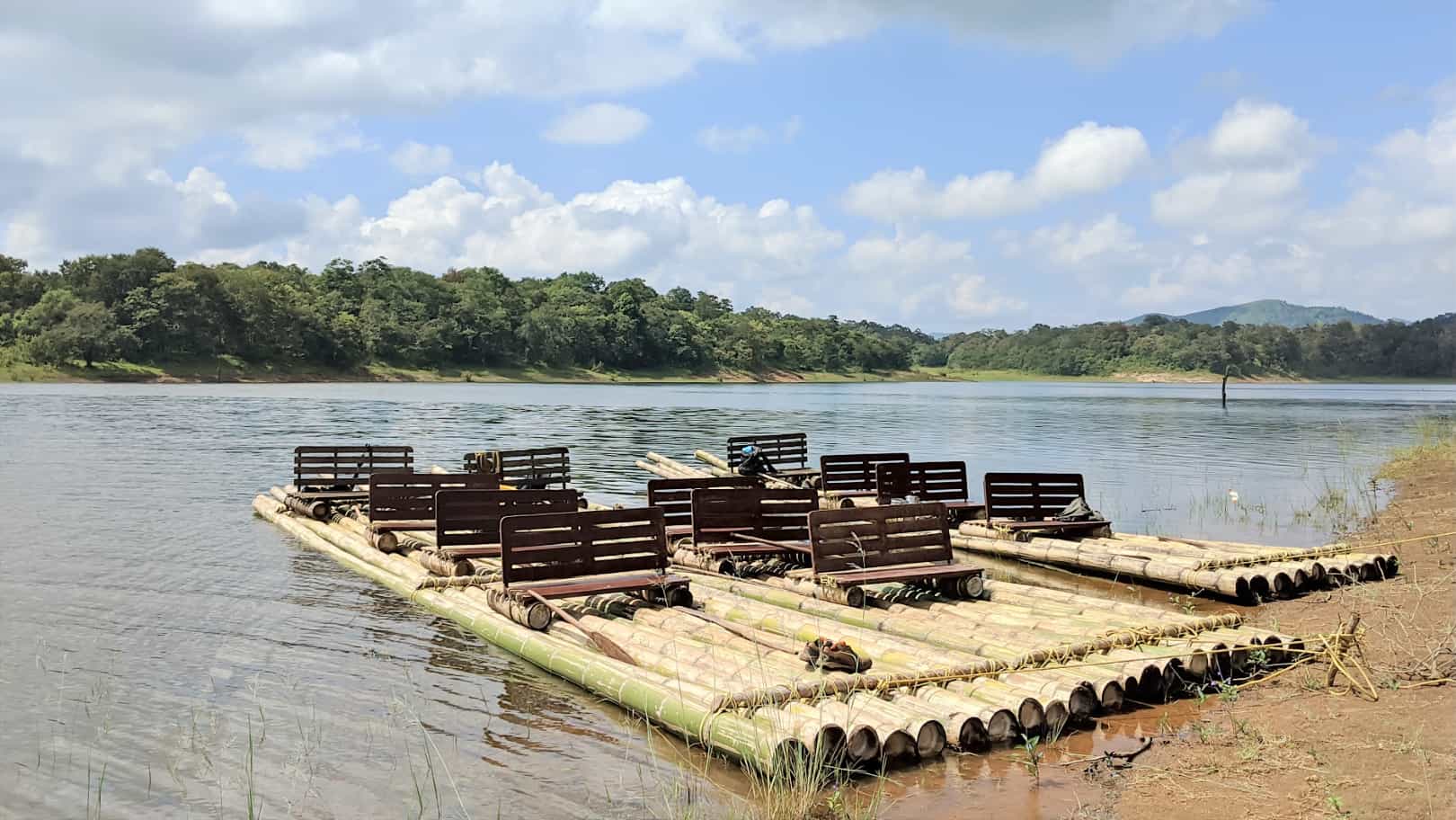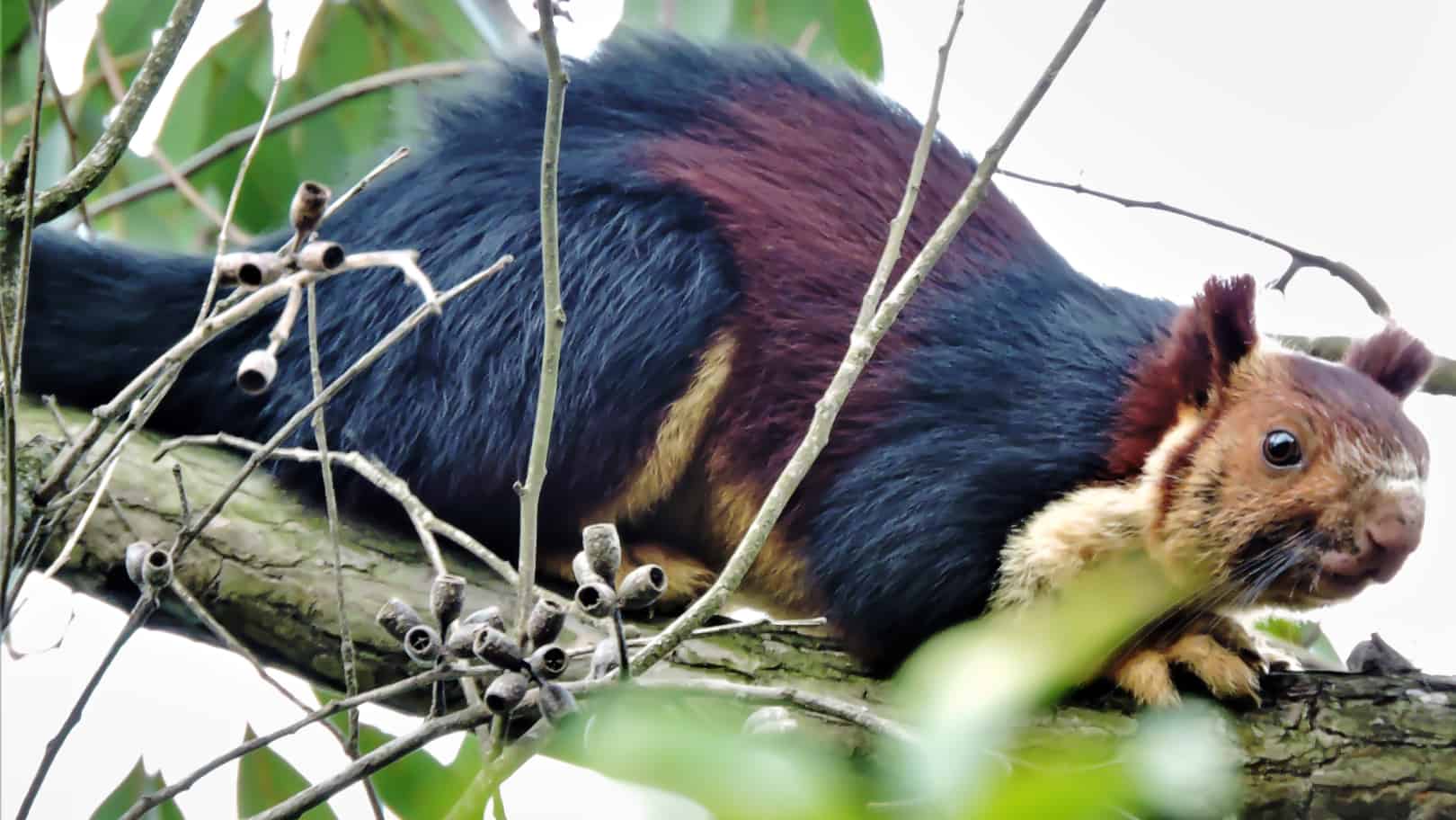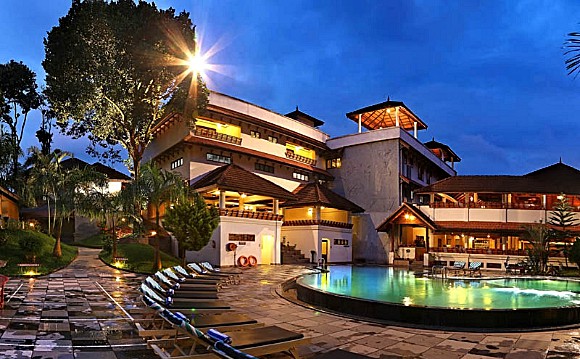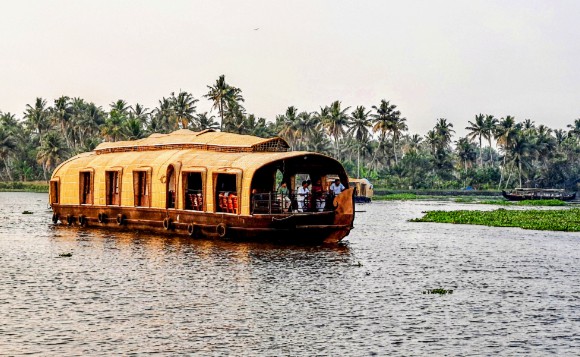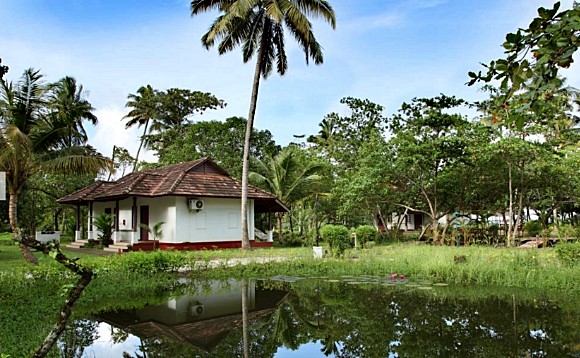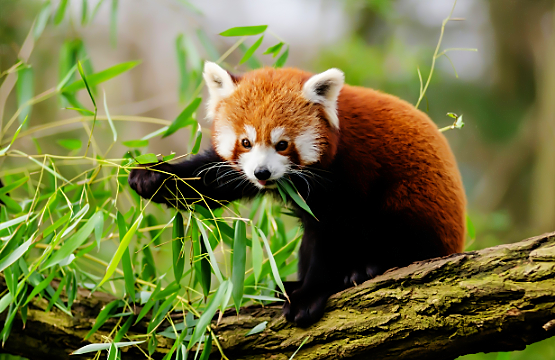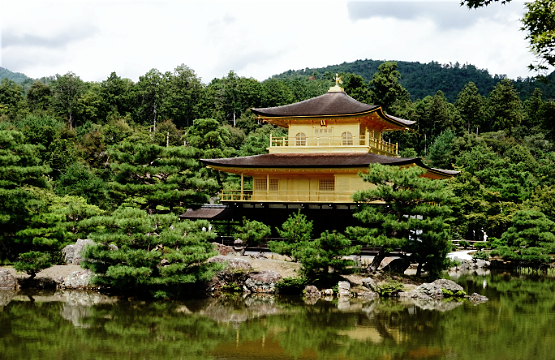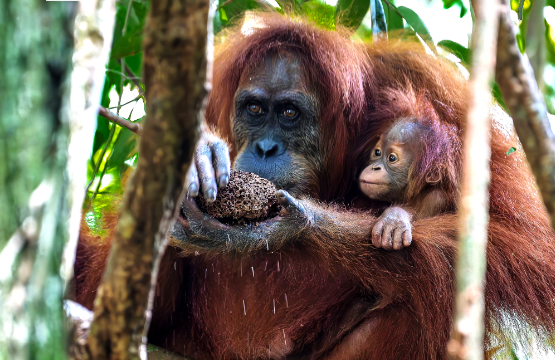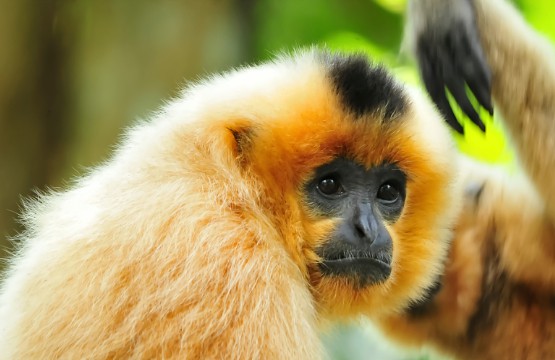Full day trekking in the Sanctuary
It will be a guided program by the forest Department and there are chances of closure of the Sanctuary between April and June due to the fear of wild fire/heavy rains. At 07:30 am we have to report at the bus boarding point. Once we reach the starting point, we will finish the registration formalities and collect leech socks, packed light breakfast and a proper hot lunch etc. The program has around 12 km of soft hike and 3 km of bamboo rafting. This will be a nice program to watch possible wildlife in the sanctuary. Only physically fit travelers can do this full activity. Children below 13 years are not allowed to participate in the program. Packed breakfast and lunch are provided. Evening return to the base to return to your hotel. Overnight at hotel.
Note: It will be a guided program by the forest Department and there are chances of closure of the Sanctuary between April and June due to wild fire and/or heavy rains.
This is one of Kerala’s first Responsible Tourism Programs as a part of rehabilitating the tribal people who lived inside the Sanctuary and sometimes Poachers and hunters. With the help of an Eco Development Society (EDS),these people are now the guards of the forest for the best conservation and the best guides for tourists because they know the forest very well including the movement of wild animals. The revenue from these programs help the Government to give back to the Community to enable them to have decent living.
The Thekkady sanctuary is one of the best in the country for watching and photographing unique flora & fauna. A cruise through the waters of Periyar Lake around which the wildlife sanctuary is situated, offers lots of photo opportunities. This is the only sanctuary in India where you can have the unique experience of viewing wildlife at close quarters from the safety of a boat on the lake. The greatest attraction of Periyar remains the large herds of wild elephants that come down to the lake’s edge. Tigers are sighted when the forest water holes dry up and these animals come and drink water from the river.
Evergreen and semi-evergreen forests constitute the major part of the Periyar Tiger Reserve. The rest of the area is a combination of moist deciduous forests and grasslands. Of the 27 tiger reserves in India, the Periyar Tiger Reserve is the oldest in the country and the largest in the State. The abundant wildlife here attracts a lot of visitors. Apart from being a recognized breeding ground for tigers, the reserve has also been identified as the best place for researching elephantine life. The tiger population in the area is estimated to be about 40. Though it is difficult to sight them, visitors often spot pugmarks and scats around the reserve. Thirty-five species of mammals have been identified here. They include rare and endangered species. A boat ride on the lake is a great way to spot the wild elephants, the Gaur, the Sambar and so on. While the Gaur is the largest of the bovines here, the Sambar, the largest deer in India, is the main prey of the tiger and the wild dog
Apart from these, there are wild pigs, Malabar Giant Squirrels, Small Travancore Flying Squirrels, jungle cats, sloth bears etc. The endangered species in the area include Nilgiri Langurs and the Lion-tailed Macaque, that is usually seen only in the evergreen interiors. Nilgiri Tahrs are also found in the reserve, especially in the higher rocky areas. Salim Ali’s fruit bat, one of the rarest bats, is also reported to have been found in the area. The stripe-necked mongoose, usually found in the semi-evergreen and evergreen forests, the extremely rare Nilgiri Marten – the only species of marten found in southern India- and endemic mustelids are also seen here.
There are about 265 species of birds in the Periyar reserve including migrant birds. The birds include raptors, water birds, galliform birds, pigeons, wood peckers, darters, kingfishers, golden orioles, Brahmini kites, cormorants and passerines, as well as a large flock of the Great Pied Hornbill and the Ceylon Frogmouth. The endemic species include the Malabar Grey Hornbill, the Nilgiri Wood Pigeon, the Blue-winged Parakeet, the Nilgiri Flycatcher, the small Sunbird and the White-bellied Blue Flycatcher. Other birds found in the area are the Black Baza, Forest Eagle Owl, Nilgiri Thrush, Little Spider Hunter, Rufous bellied hawk eagle etc.An interesting sight is that of water fowl perched on the dead trees protruding out onto the lake. Other aquatic birds include the Indian Darter and the Black–Necked Stork. Woodland birds, owls etc. can also be seen in the forest.
There are 1966 varieties of flowering plants, including angiosperms. Both dicots and monocots have been included in this count. There are about 171 grass species and 140 species of orchids in the region. The richness of the flower wealth is so outstanding that it constitutes more than 50 percent of the entire flower wealth of Kerala, which is about 3800 species. Teak, Rosewood, Terminalia, Eucalyptus, Sandalwood, Jacaranda, Mango, Jamun, Tamarind, Banyan, Pipal, Plumeria, Gulmohar and bamboo are some of the trees found here. The three main endemic plants are Mucuna pruriens thekkadiensis, Habenaria periyarensis and Syzygium periyarensis. Rare plants like the Podocarpus wallichianus, the only South Indian conifer, are also found in the reserve. More than 350 medicinal plants, including trees, shrubs and herbs, have been identified at the Periyar Tiger Reserve, mainly in the evergreen and moist deciduous forests. Plants belonging to the family of Fabaceae and Euphorbiaceae are the major ones among them. Glory Lily (Gloriosa superba) and Kino Tree (Pterocarpus marsupium) are two plants with medicinal value found here.
Accommodation: The Elephant Court
Meal: Breakfast
